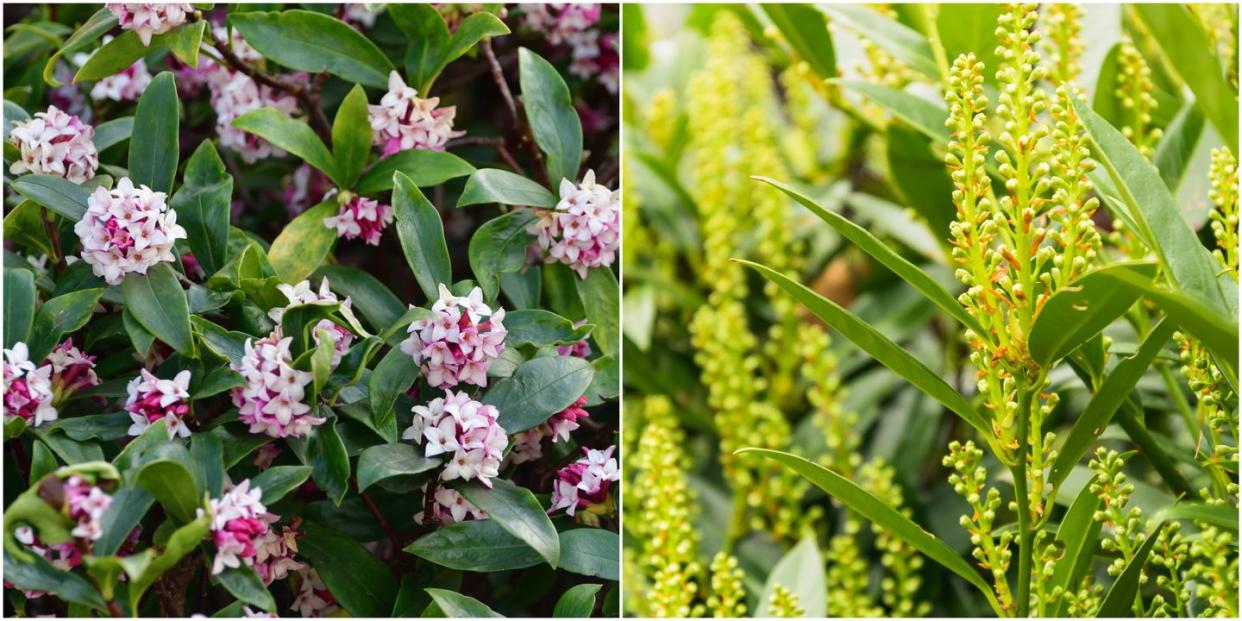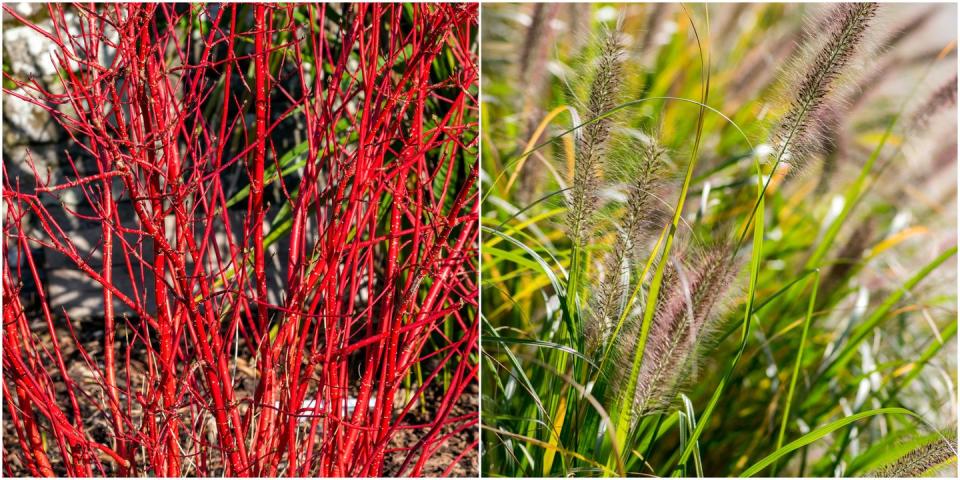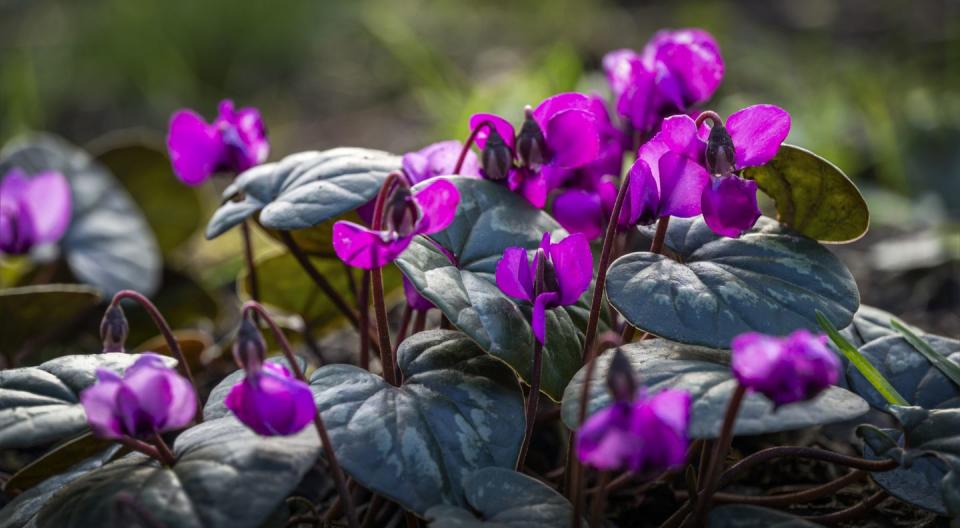10 best winter flowering plants

Have you ever wandered down a street in deepest midwinter and been distracted by a heady floral scent in the air, but you just can't work out where it’s coming from? Most likely, the secret source is a tiny but powerfully perfumed flower on a winter-blooming shrub. It could be the unassuming evergreen Sarcococca confusa, sweet box, or the delicately glamorous Viburnum bodnantense 'Dawn'.
Once you start paying attention, it might surprise you how much flower power you can find to light up the dark and gloom of the short, cold, winter days. There are many secret (and not so secret) winter bloomers – plants for brilliant festive colour, plants with a magical scent and some that delight all the senses.
Winter flowers are designed by nature to provide much needed nectar for late lingering pollinators. This means they often take the form of attention-seeking, jewel-coloured blooms; but scent is their other secret weapon. Adding these zingy seasonal blooms to borders, containers and window boxes is a guaranteed distraction from the sparseness of winter.
Set the scene for winter flower displays with contrasting evergreens and shrubs with coloured stems. Bare branches and tree trunks are also a source of winter magic. Francis Annette, garden manager at Wakehurst, Kew, recommends: 'For standout colour, don't miss Cornus alba 'Sibirica' (Siberian Dogwood). This upright carmine beauty really stands out on a dull winter's day, especially when underplanted with Pennisetum alopecuroides 'Hameln' (Fountain grass). And no winter garden display is complete without snowdrops. I always go for Galanthus woronowii – it has fewer flowers and broader brighter green leaves but I think the overall look is much more natural.'

Winter flowers are mostly tolerant of cold and rain and may get frosted, but are tough enough to produce new flowers in milder spells. Fill the gaps where summer perennials have died back and containers need refreshing with ground-hugging perennials and bulbs. Choose from seasonal cyclamen, well-behaved flowering heathers in muted pastel shades or bolder pansies for long-lasting colour.

If you're planning a winter border, plant shrubs in autumn before the frosts make the soil impenetrable to new root growth. Add mulch and grit for drainage and winter protection, and you should be rewarded with Christmas blooms. Or plant into containers and the results will be just as effective.
All the following plants have the power to transport you a million miles away from a bleak December day and keep up spirits until spring graces us with its effervescence once more. Here are 10 plants (outdoors and indoors) that no winter garden should be without.
1. Hellebores
The undisputed stars of winter perennial borders, with flowers appearing from early December.
Their early blooms have earned their name of Christmas Rose and they are high on fascination. Flowers are elegant in muted tones from white through to speckled red wine, to darkest maroon. Cut the nodding flower heads to float in a bowl as an indoor decoration or plant single varieties in containers, accompanied by snowdrops and black mondo grass. Guy Barter, senior horticulturalist at the RHS says: 'In winter we make extensive plantings of hellebores. We often use newer hybrids, bred to have upwards facing flowers, Helleborus 'Walberton's Rosemary' for example. These are complemented by broad swathes of bulbs.'
2. Cyclamen coum
Differing from the larger, bolder floristry types, this cylamen is reliably hardy, returning to spread and carpet areas under trees and shrubs.
It copes with the coldest of winter weathers to reward us with tiny but brilliant pink, white and magenta flowers and marbled foliage from as early as December, continuing through to late March. Plant the doughnut-like corms in a container to enjoy them up close on windowsills and doorsteps, then transfer them into the ground where they will naturalise over time.
3. Eranthis hyemalis
Winter aconites don’t attract the fanaticism that snowdrops do, but they are a brilliant and welcome sight.
You'll spot the first golden buttercup-like blooms as early as January. These will naturalise happily in grass alongside the other early bird flowering bulbs and provide a welcome pollinator-friendly resting place for insects.
4. Iris reticulata
One of the early flowering bulbs, it appears in January and February.
It's a real tonic when winter feels like it's dragging on. Best planted in pots to admire up close, it has ravishing leopard-print markings at the throat of the petals. With many glamorous cultivars to choose from, try rich purple 'Pauline', bright blue 'Harmony' or the elegant pallor of 'Katherine's Gold'. It will return year on year, but is shy of spreading, so keep repotting to get the best performance each year.
5. Daphne
The queen of winter, evergreen daphnes have exquisitely scented flowers and good foliage.
Plant a daphne near a doorway or path so that you catch the fragrance whenever you pass – it will transport you to more exotic climes. Classic winter-flowering cultivars are Daphne bholua 'Jaqueline Postil'. 'The purple and white flowers beg for you to bury your nose in and inhale as much fragrance as you can,' says garden manager Francis Annette, who designed the Winter Garden area at Wakehurst Arboretum in West Sussex. For smaller spaces, try compact Daphne odora. For larger flowers try 'Perfume Princess' that comes in pale pink or brilliant white.
6. Chimonanthus praecox
The non-latin name is wintersweet which hints at what makes this unassuming shrub so special.
The apparently bare stems bear tiny, waxy flowers, tucked into the nook of the branches. These have a scent which is simply divine in the very most barren heart of the winter months..
7. Mahonia
Also known as the Orgeon grape, mahonias are an evergreen shrub with bright yellow winter flowers that have a heady perfume.
M. x intermedia 'Charity' is a classic shrub choice for tricky corners and shade where it won't need much attention. Use it for year-round foliage structure and fantastic winter fragrance. Pruning upwards into a small tree shape reveals attractive nutty, gnarly stems. Try the more compact evergreen Mahonia 'Soft caress' for smaller spaces and containers. The narrow feathery foliage has an altogether gentler texture – no prickles on this one.
8. Camellias
With impossibly perfect waxy blooms and glossy, elegant foliage camellias have the perfect timing to tease you out of seasonal gloom.
Look for sasanqua group Camellias that start flowering as early as December. There are many different cultivars that flower through to spring in shades of white, pink, red, and in single, double and ruffled forms. Camellias need acid soil to perform well but, as they thrive in shade, they make good specimens for urban container gardens. Use them as a statement plant or as a flowering hedge. Flowers can be affected by frost – cut branches when the temperatures dip to enjoy the flowers indoors too.
9. Clematis cirrhosa
There's a clematis for every season and this is a great winter treasure and a reliable climber that is happy in sun or part shade.
C. cirrhosa purpurascens 'Lansdown Gem' will give you a good display of ruby-coloured, bell-shaped flowers through the winter months. It's a group one evergreen clematis and needs pruning after flowering, in mid to late spring, to keep it in check, but is otherwise quite easy going.
10. Abeliophyllum distichum
The white forsythia is a florist's favourite.
Recommended by floral designer Hazel Gardiner, the leafless dark, slender branches carry starry white or pale pink flowers that look very much like the yellow forsythia blooms, although it is a totally different species from Korea. It's a scrambling, deciduous, medium-sized shrub that will do well in containers or borders. You can cut the budding branches so the flowers open indoors.
Follow House Beautiful on TikTok and Instagram.
You Might Also Like



